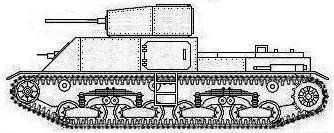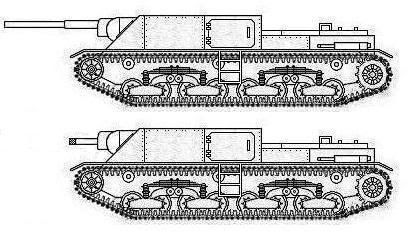February 8th 1935- Lt Col Korne left the Romanian embassy in London after delivering his report, his next destination being France. He was very pleased by the time he spent in Great Britain with Vickers being very interested in doing business, the quantity of vehicles showed to him sometimes overwhelming.
Excerpts of Lt Col Korne report:
"the Vickers 6 ton(1) was offered for license but while the vehicle was the standard at the beginning of the decade they are now being left behind by the new tanks entering production..."
"...Vickers new cruiser tanks(2) are an interesting design... two similar versions are being developed alongside each other...one being better protected than the other one but at the same time slower... the better protected version very similar in characteristics to the Lt-33(3)...could make a decent purchase..."
"...Vickers is also producing an infantry tanks(4)...a Royal Arsenal designed infantry tank is being produced by Vulcan Foundry... is protected by as much as 78mm armor and weights 27 tons(5)...the problems is the painful slow speed of the vehicle..."
"...off the record informed that indeed they were in the early stages of developing a 20 ton cruiser tank...they could be using an aircraft engine for propulsion and heavier guns than the ones already in service...(6)(7)"
(1)Weight 7.3 tonnes
Length 4.88 m
Width 2.41 m
Height 2.16 m
Crew 3
Armor 13 mm
Primary
armament 47 mm gun (Type B only)
50 rounds
Secondary
armament 1 or 2 machine guns
Engine gasoline
80–98 hp (60–70 kW)
Power/weight 11–13 hp/tonne
Suspension leaf spring bogie
Operational
range 160 km
Speed 35 km/h
(2) Cruiser tank A9
Weight 13 tonnes
Length 5.8 m
Width 2.5 m
Height 2.65 m
Crew 6 (Commander, gunner, loader, driver, 2x MG gunners)
Armour 6 - 14 mm
Primary
armament QF 2-pdr
100 rounds
Secondary
armament 3 x 0.303 Vickers MG
3,000 rounds
Engine AEC diesel
150 hp
Power/weight hp/tonne
Suspension Bogie
Operational
range 241 km
Speed 40 km/h
(3)Cruiser tank A10
Weight 14.3 tonnes
Length 18 ft 4 in (5.5 m)
Width 8 ft 4 in (2.6 m)
Height 8 ft 8 in (2.5 m)
Crew 5 (Commander, loader, gunner, driver, Hull MG gunner)
Armour 6 - 30 mm
Primary
armament OQF 2pdr
100 rounds
Secondary
armament two Vickers/BESA Machine guns
4,050 rounds
Engine AEC Type A179 6-Cylinder Petrol
150 hp
Suspension triple wheel bogie with coil spring
Operational
range 100 miles (road)
Speed 16 mph (road)
8 mph (off-road)
(4) Matilda Mk I
Weight 11 Long tons
Length 4.85 m (18 ft 5 in)
Width 2.28 m (8 ft 6 in)
Height 1.86 m (8 ft 3 in)
Crew 2 (commander/gunner, driver)
Armour 10–60 mm
Primary
armament .303 or .50 inch Vickers MG
4,000 rounds
Secondary
armament none
Engine Ford V8 petrol,
70 hp (52 kW)
Suspension Sprung bogie
Operational
range 80 miles (128.7 km)
Speed 8 mph (12.87 km/h),
off road: 5.6 mph (9 km/h)
(5)Matilda Mk II
Weight 27 long tons (27 tonnes)
Length 15 ft 11 in (6.0 m)
Width 8 ft 6 in (2.6 m)
Height 8 ft 3 in (3.5 m)
Crew 4 (Driver, gunner, loader, commander)
Armour 78 mm
Primary
armament QF 2 pdr (40 mm),br>93 rounds
Secondary
armament 7.92 mm BESA machine gun
2,925 rounds
Engine 2 × diesel, AEC or Leyland 6-Cylinder
180 hp (134 kW)
Power/weight 6.55 hp/tonne
Suspension Horizontal coil spring
Operational
range 80 km
Speed 15 mph (24 km/h) road
9 mph (15 km/h) off-road
(6) OOC: I was informed the vehicle will be powered by a modified Peregrine engine and armed by a 3 pounder and a 6 pounder in the infantry support mode. The british government will give more details later on.
(7) All the British vehicles mentioned above just entering production in early 1934 except for the one in development. Quantities in service are limited.
This post has been edited 3 times, last edit by "perdedor99" (Aug 4th 2007, 3:56pm)
Quoted
Originally posted by Kaiser KirkQuoted
Originally posted by perdedor99

